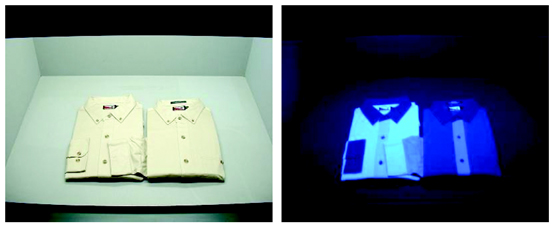To establish a color quality control program, you need good instrumentation, software, and trained users. Here are 5 pitfalls to avoid.
By Tim Mouw, Applications Engineering & Technical Support Manager, X-Rite
There are many places that color can go wrong in manufacturing. Inconsistent and inaccurate color leads to rejects, rework, delays or products on the discount shelves. Establishing a color quality control program can help ensure that the color specified is the same color manufactured. Setting up a color QC program can help you accurately communicate color with clients and suppliers, inspect raw materials before you begin working, and verify your color is correct before you ship.
To establish a successful quality control program, you need good instrumentation, robust software, and trained users. But even with everything in place, there are some common pitfalls to watch for when using a spectrophotometer to analyze color quality.
Physical standards and samples don’t last forever. Careless handling and dirty devices can quickly destroy them. Here are three tips to avoid bad sample:
White isn’t always what it seems to be. This effect is caused by the presence of optical brighteners, which are fluorescent materials that manufacturers add to make their products look whiter.

For example, take two white shirts that look identical under daylight. But those same shirts under UV lighting and they look quite different. This is because one of the shirts uses fabric with optical brightener agents (OBAs). This can be a real problem for manufacturers who assemble products with parts from different factories.
Here are three tips to control optical brighteners:
OBAs aren’t just a problem for textiles. They can also be found in paper, packaging, plastics, paints and coatings, and liquids.

Have you ever seen a picture of a professional baseball field with lines or checkerboard patters in the grass? How do the groundskeepers force the grass to grow in two different colors? Do they carefully spread two different types of grass seed, light and dark green?
In this case, it’s true the grass is greener on the other side. Literally. If you force it to lay in one direction, you see more of the side of the blade. Force it to lay down in another direction and you see more of the ends. This phenomenon is called gonio-appearance, or geometric metamerism.
Gonio-appearance is seen quite often in fabrics, especially piles, corduroy, and satins. If you brush the nap in one direction, you see one color. Brush it in another direction and you see a different shade. As you can imagine, textured surfaces are difficult to measure. A sphere spectrophotometer like X-Rite’s Ci7800 benchtop can measure light reflected at all angles and calculate color measurements that closely match what the human eye would see.
To choose the right color measurement device, you need to consider the characteristics of your samples. There is no way to list all of the sample variables that can affect your measurement data, but here are a few to consider:
Once you have identified as many variables as possible, create procedures around them. This will enable everyone involved in the color program, whether on site or off, to control color throughout a manufacturing run.
By taking these common pitfalls into consideration as you develop your color measurement and management procedures, you will be more likely to achieve and deliver accurate color.
Tim manages of the Applications Engineering and Technical Support Team for X-Rite in the Americas. He oversees a team of 20 technical support specialists that help customers improve color quality control processes. Over the past two decades, Tim has taught over 300 courses on color science across the globe. Stay connected with Tim on Twitter @xritecolor.
Scott Ellyson, CEO of East West Manufacturing, brings decades of global manufacturing and supply chain leadership to the conversation. In this episode, he shares practical insights on scaling operations, navigating complexity, and building resilient manufacturing networks in an increasingly connected world.